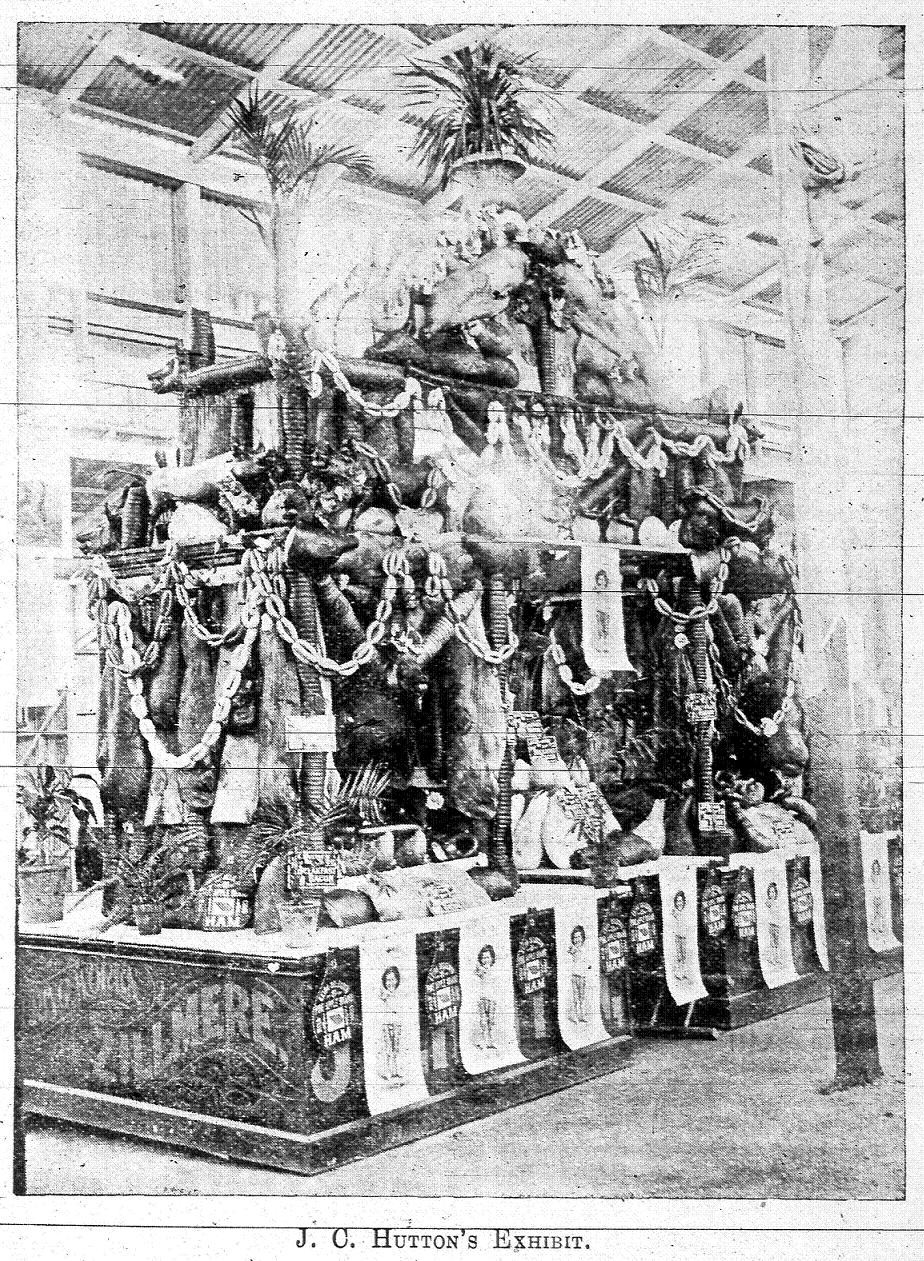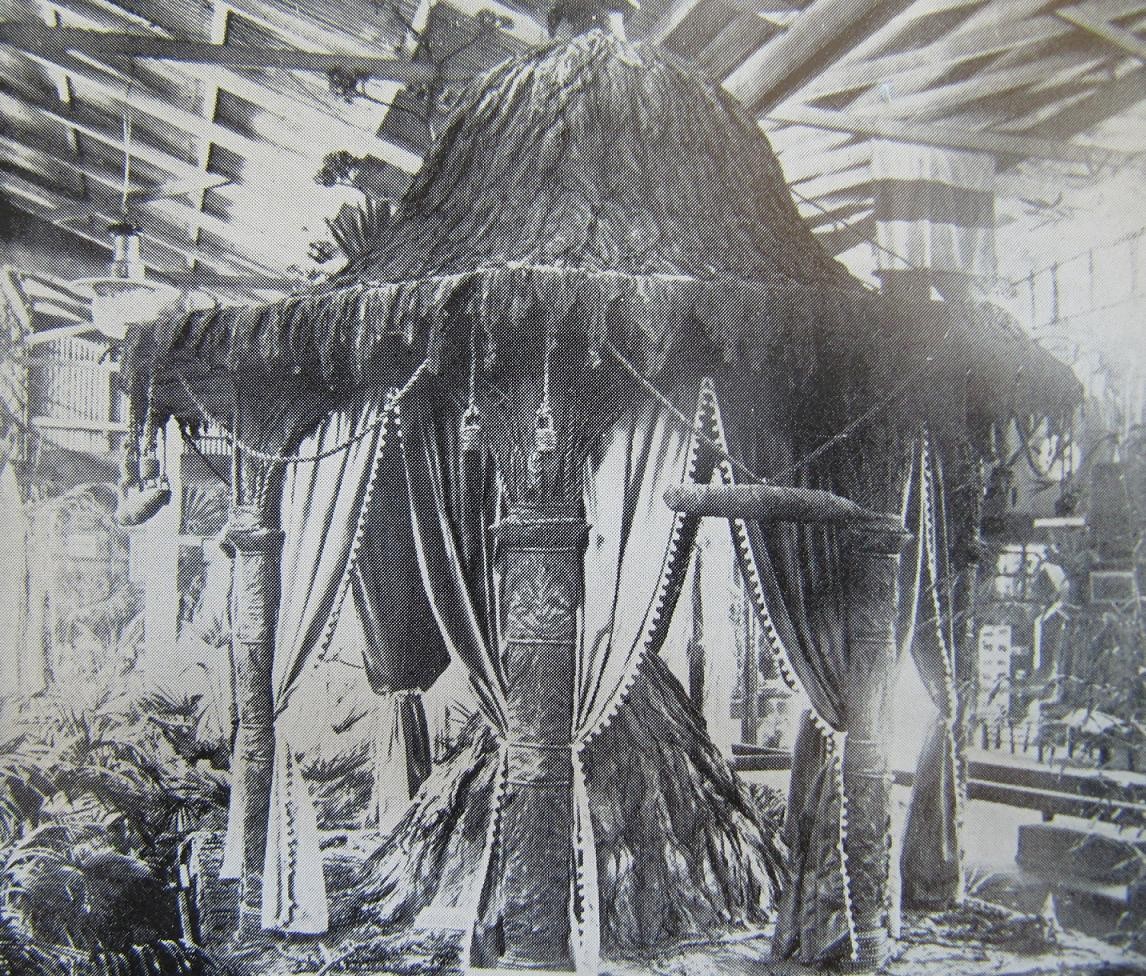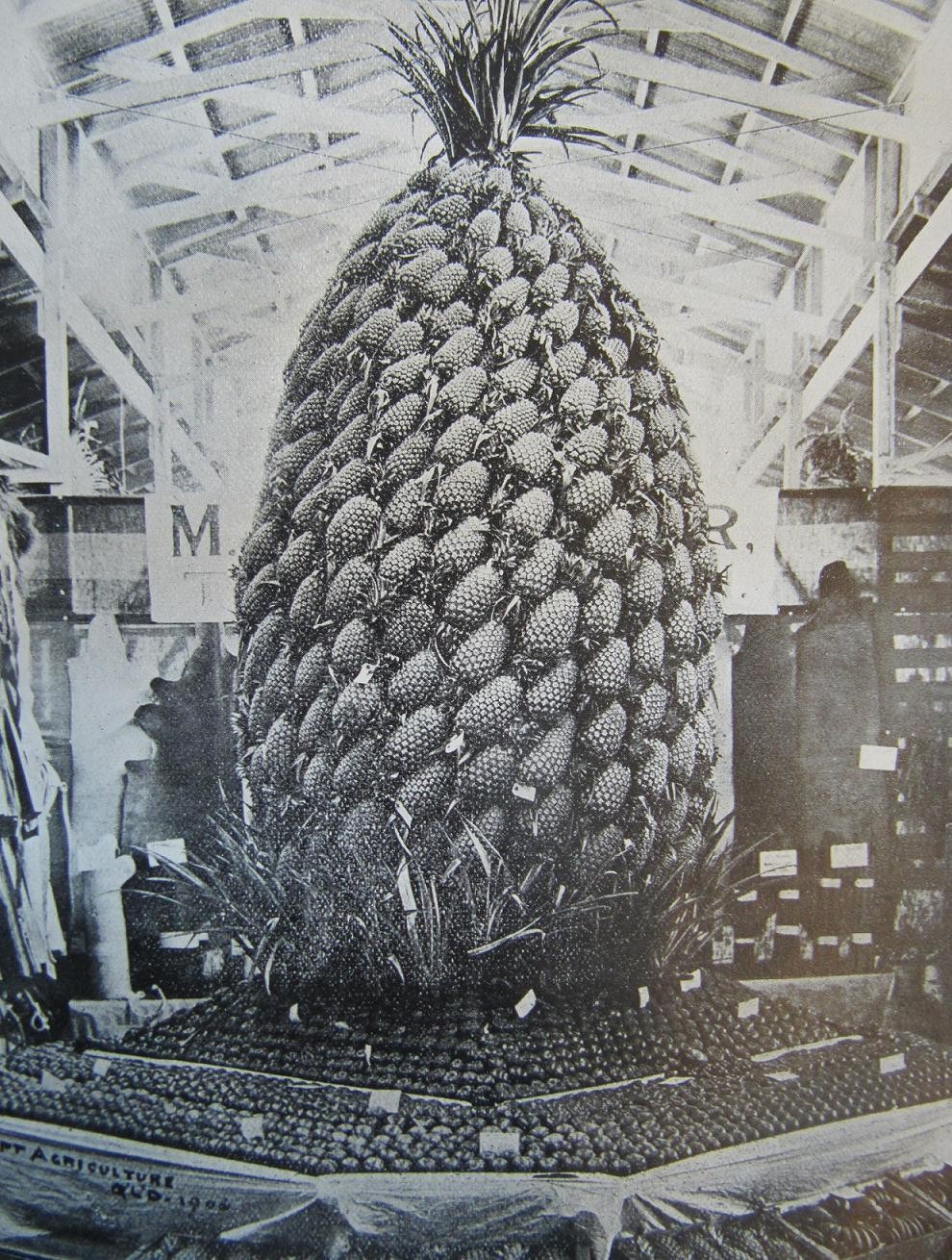Throughout its long history the Brisbane Exhibition (the EKKA) has proudly exhibited Queensland's industries and produce. To emphasize the growth and prosperity of these industries many exhibitors constructed highly elaborate and detailed exhibits of their products to wow audiences. Many went to great pains to turn mundane everyday items and products, such as soap packets, pineapples, bacon, tobacco and butter into works of art.
Here are a few impressive exhibits from Exhibitions past -

One of the most speculator exhibits during the 1954 Brisbane Exhibition was a life-size model of Queen Elizabeth II made entirely of butter. The model was made by Queensland sculptors Len and Kathleen Shillam for the Butter Marketing Board and carved from a 152 kg block of butter. The Royal model was placed in a refrigerated display cabinet surrounded by "an attractive display of 56lb boxes of butter". The butter-model of the Queen was wearing a tiara, carrying a handbag and holding a bunch of flowers. She was dressed in an evening gown embroidered with roses. The butter sculpture needed to be kept at a temperature no higher than 10 degrees celcius.
In 1899 J.C. Hutton & Co. presented their large trophy of fine cured ham, bacon and sausages. The whole display reportedly stood 20 feet high, 18 feet long and 8 feet deep. The Warwick Argus newspaper observed with admiration that "hams, sides, and rolls of bacon, with lard and small goods were piled together in such a way as to make quite an artistics and imposing arragement".

"The facade was formed of splendid specimens and hams, covered and uncovered, the apex consisting of a large pig's head, smoked, and the whole surmounted by plants and ferns...Behind, below, and around were savoury-looking hams, sides, and rolls of bacon, the fat firm and white...The butresses were composed of several specimens of animals smoked whole, some of them standing erect and looking quite lifelike". The Queenslander, 19 August 1899, p.390
The 1908 Brisbane Exhibition featured a temple or koisk made entirely from tobacco leaves.

"The pillars, with Corinthian capitals, the flutings, architraves, and, in fact, everything architectural, were twisted out of tobacco leaf, whilst the beauty of the structure was enhanced by gracefully looped curtains (the work of a lady, by the way), and at night it was illuminated by a chandelier of electric light" - Queensland Agricultural Journal, September 1908, p.115
The 1906 Exhibition featured a giant 10 foot pineapple trophy made of...pineapples!

Browse Ekka materials in One Search, the library catalogue
A set of photographs of the Ekka from times past is also available on Flickr Commons
The Ekka website has been archived by the State Library for a number of years. You can view the site over time on PANDORA, the web archive.
SLQ’s new digital volunteer program Pitch In! is looking for volunteers to contribute their own memories of the Ekka to Historypin. You don’t have to have been at the Ekka in 1940s to get involved, we’re looking for stories young and old. Any stories relating to the iconic images are welcomed. Explore the Ekka images on Historypin via the map. Click on the image and contribute your own story in the comments section.
Myles Sinnamon - Project Coordinator, State Library of Queensland
Comments
Your email address will not be published.
We welcome relevant, respectful comments.